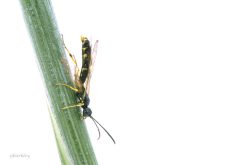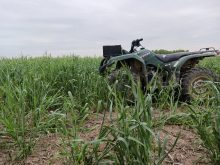Lee Briese’s soil health principles build upon five pillars: soil armour, minimizing disturbance, diversity, continuous living roots, and livestock integration.
“I don’t find these to be laws, commandments or requirements for soil health management,” the North Dakota crop advisor said. “These are nice guidelines to help guide some of the practices,” Briese said.
“I’ve learned that each farm is different and unique, and [so are] the challenges.”
At the same time, he acknowledged that integrating soil health principles can be daunting.
Read Also

Alberta Pulse Growers fuelling young athletes with local protein source
A one-year partnership with School Sports Alberta to highlight benefits of pulses in student athletes’ diets in province’s 400-plus schools.
His recommendation checklist is basic: identify the problem, set a goal, generate possible solutions and plan and measure efficacy.
Start with the low-hanging fruit by identifying repetitive issues, he said, like excess moisture in a minimal tillage field, for example.
“What can you do? Can you manage residue? Can you do some type of vertical tillage? Can you do some type of cover crop? Maybe [you] want to try a combination of those practices to make it work? And then make that plan, write it out and then evaluate.”
If there are multiple solutions and the means to use them, Briese encouraged producers to run strip trials of single and combination solutions to see which ones provide the most benefit. It takes at least a full year to assess the success or failure of any new protocol, he warned.
Building soil armour can be achieved with any combination of reduced tillage, cover crops, leaving residue and infusing carbon into the soil, all of which can mitigate rainfall impact, improve soil stability and reduce runoff issues.
Briese’s first recommendation is to leave as much residue standing as possible, though it can be challenging to redistribute it evenly.
“The continuously living root is important for a lot of the soil microbes, but it’s really difficult to do in the northern climates,” said Briese.
“But maximizing that time of having plant growth in there and doing as much as you can with that, within reason, makes a lot of sense to me.”
An integrated pest management strategy for insects and disease is essential. Rate, timing and thresholds for any application must be known but also have to be economically feasible.
Briese said Mother Nature provides some of the strongest pest inhibitors through black and green ground beetles and predatory insects like the parasitic ichneumon wasp, which lays its eggs in caterpillars.
Ground beetles are usually nocturnal and target larvae and pests as their primary food source. They thrive in cover crops and long grasses found in orchards, vineyards and field borders.

“These things are mercenaries against other insects. They are voracious feeders and eat so many other different types of insects,” he said. “Some of them will also feed on weed seeds as well as cover crop seeds broadcasted on the surface of the soil, so they’re not always great, but for the most part, they are.”
Below the soil, propagation of mycorrhizae, fungi that help plants gather nutrients, and rhizobia, which allow legumes to fix atmospheric nitrogen, are critical plant growth tools, he added.
Briese is particularly fond of naturally occurring biocontrol nematodes that carry a bacterium that infects larvae or caterpillars and consumes them from the inside out.
“These are very cool and interesting organisms, but unfortunately, they’re difficult to manage. One of the things that we can do is try to promote habitat,” he said.
“That’s probably the most powerful thing you can do as a land manager, which comes down to reducing that tillage.”
Cover crops provide protection and food sources to support nitrogen-fixing bacteria and ensure all beneficial organisms have a host.
Earthworms are the poster invertebrate for soil health, but not all earthworms are created equal and few are native.
“The vast majority of earthworms that we have [were] brought over and introduced,” said Briese. “They’re not necessarily causing huge detriment to our soils, but the [Asian] jumping worms can and do.”
First reported in Ontario, New Brunswick and Nova Scotia in 2022, the jumping worm, at seven to 16 centimetres, is larger and more voracious than the average earthworm and congregates in higher densities.
They have not yet been noted in Manitoba. In places where they have a foothold, however, Briese said they clear surface residue and detritus until the soil is open and bare, leaving it susceptible to other issues. Its castings change the soil’s physical, chemical and biological activity, which also impacts microbial sustainability.
Livestock
Briese said he struggles with the integration of livestock as a soil pillar. Some farmers don’t have ready access to livestock but animals do maintain and build excellent soil health.
“Temper that risk with respect to your individual farm. I think chicken tractors [movable chicken coops] are cool, but I don’t think everybody needs one,” he said.
“Economics is always a consideration of this. Diversity is a powerful tool, especially crop diversity and cover crops.”
A version of this article first appeared in Farmtario.















